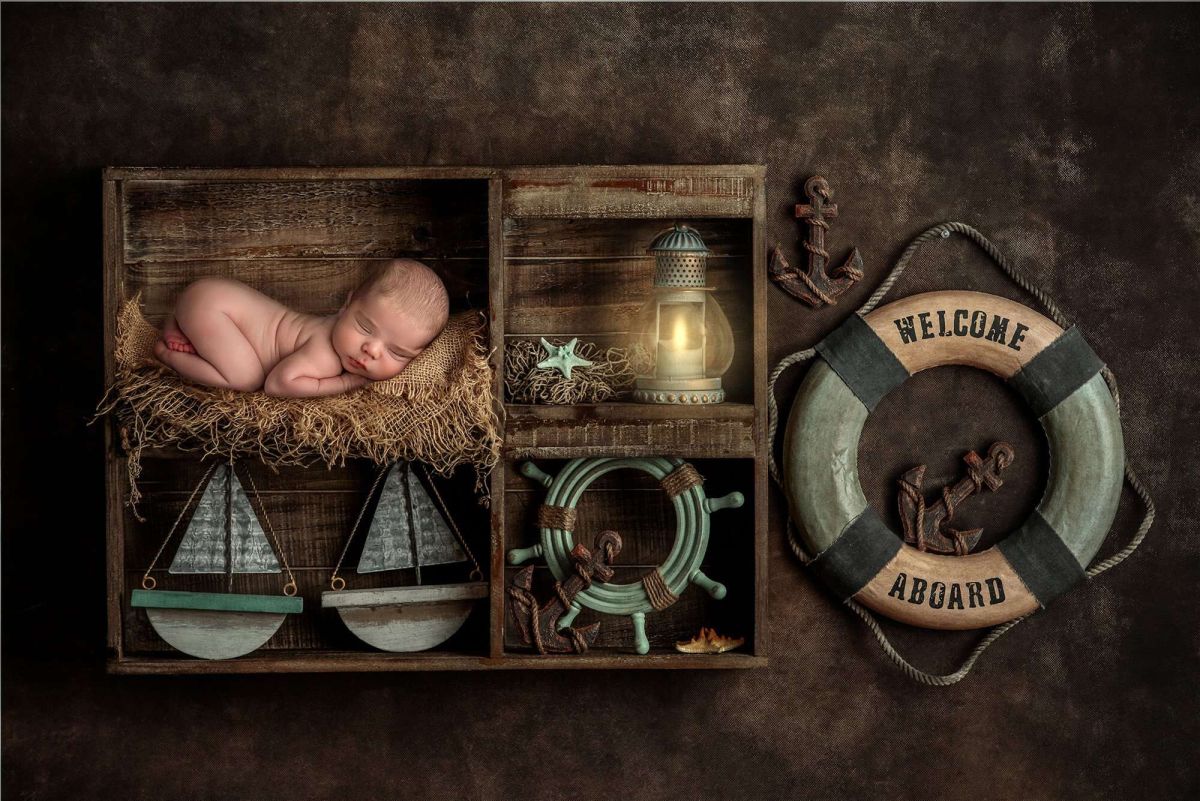
Newborn Composite Photos: Magical Portraits, Zero Risk
Newborn Composite Photos: Magical Portraits, Zero Risk
When my youngest daughter was three weeks old, my living room looked like a linen store had exploded. Swaddles everywhere, a tiny bassinet wedged between a kids’ kitchen and an overflowing laundry basket, and me—equal parts in love and overwhelmed. I wanted one keepsake portrait that felt like her: soft cheeks, wise eyes, and the hint of a smirk that said, “You’ll never sleep again, but I’m worth it.”
That’s when I discovered newborn composite photos—portraits crafted from two or more pictures, seamlessly blended so baby appears in a whimsical scene while staying safe the entire time. Composites felt like the perfect bridge between art and common sense. No balancing baby on a guitar. No perching on a swing. Just careful posing, a steady hand nearby, and smart editing to make the final picture sing.
If you’ve ever wondered how photographers create those “how is that even possible?” portraits, here’s the secret: they don’t risk it. They build it—piece by piece—with composites. Done RIGHT, newborn composite photos are equal parts artistry and safety net. Let’s unpack how they work, why they’re safer, and what to expect when you book a session.
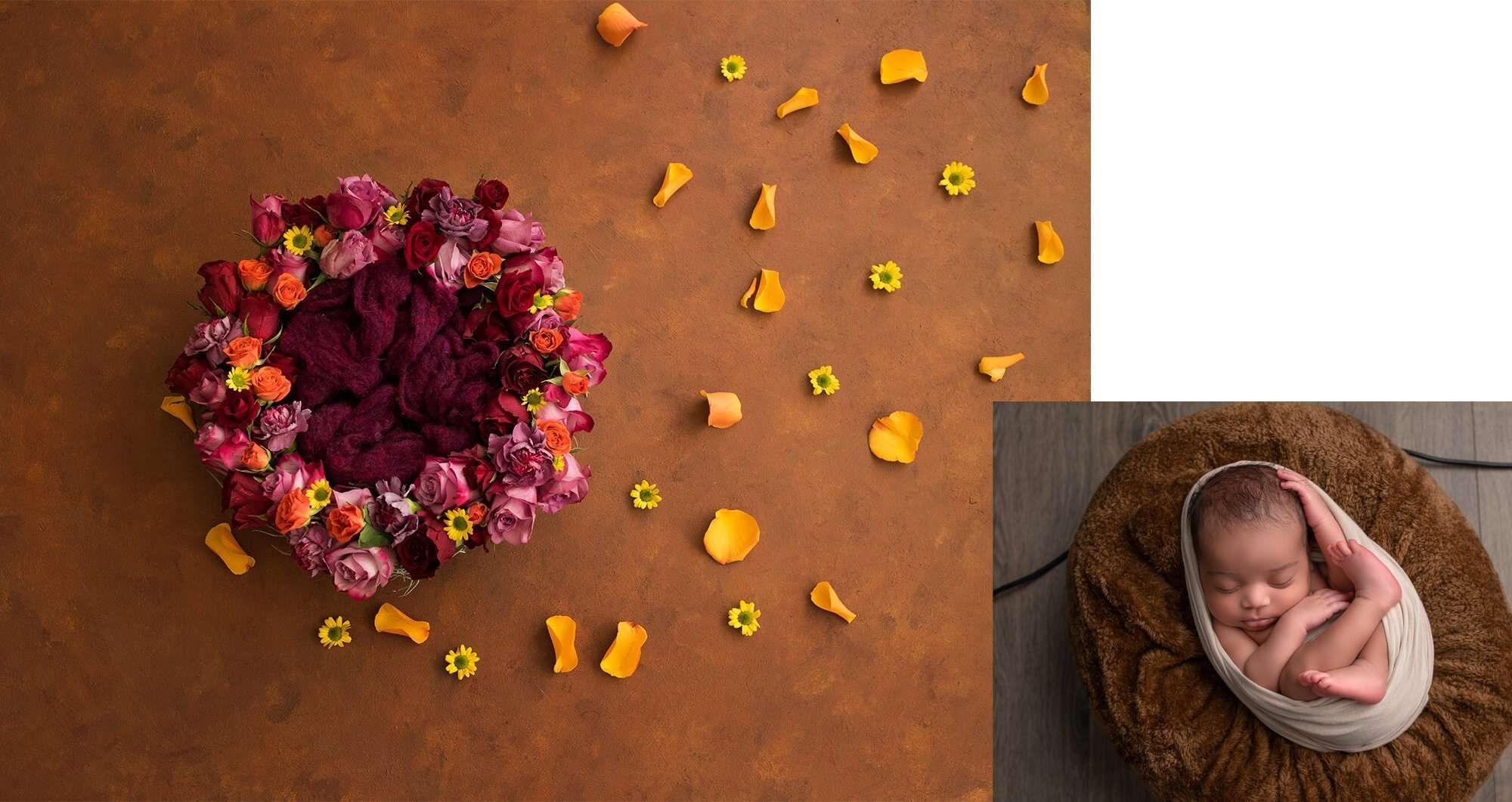
What Are Newborn Composite Photos?
In simple terms, a composite is a final portrait made by blending multiple images into one. For newborns, the photographer takes safe, supported photographs (hands on baby, spotters close by), then merges them later so it looks like baby is resting in an elaborate scene or striking a pose that wouldn’t be safe to hold on their own. claremurthy.com+1
Why Use Composites At All?
Because babies are brand new humans with wobbly heads, soft bones, and zero interest in following directions. Composites allow creativity—think baby cradled in a parent’s military cover, nestled among florals, or “resting” on a prop—without removing hands or support until editing time. Safety first; movie magic second. See more examples of newborn composites
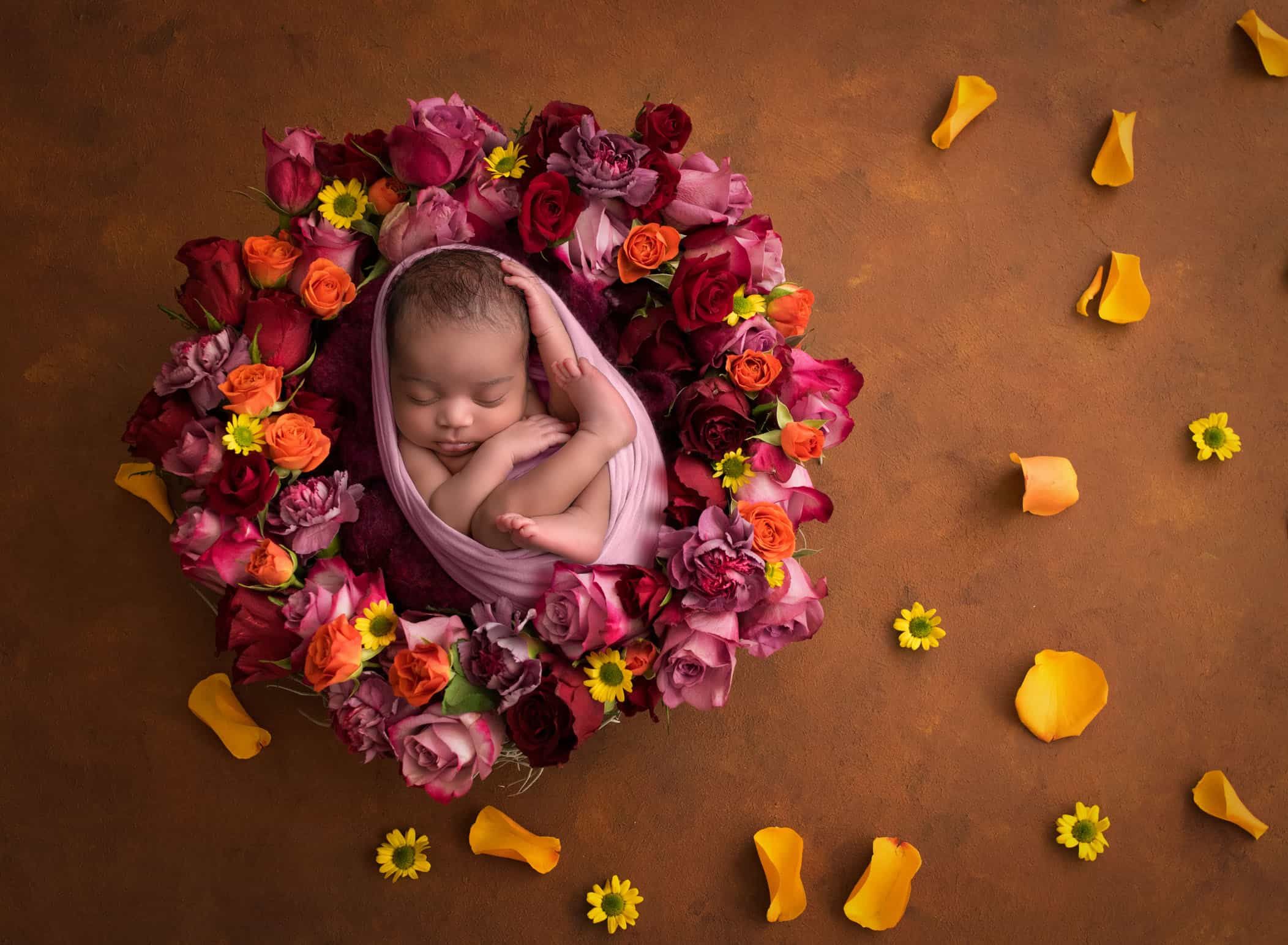
Safety: The Non-Negotiable
Any photographer worth their swaddles will choose safety over spectacle. Many internet-famous poses (like the “froggy,” where baby’s chin appears propped on tiny hands) are achieved with composites—adult hands supporting baby in each frame and never letting go. If someone tries to do it as a single exposure, that’s a red flag. ivorytreeportraits.com+1
As parents, it helps to align photo-day expectations with pediatric guidance about infant safety in general: a safe environment, constant supervision, and no precarious props. For medical-grade recommendations on safe infant care and sleep (helpful context for any newborn session day), bookmark these resources:
-
American Academy of Pediatrics: practical safe-sleep guidance to reduce risk, including firm, flat sleep surfaces and keeping the sleep space free of loose items. HealthyChildren.org+1
-
CDC: clear steps for safe infant sleep and environment (back to sleep, firm surface, no soft items). CDC+1
-
CPSC: product safety notes that echo “no loose items, no inclined sleepers.” U.S. Consumer Product Safety Commission
How a Composite Session Works (What Parents Actually Experience)
1) The Consultation
You and your photographer plan the concept: colors you love, heirlooms you want included, and any meaningful nods (service caps, a favorite book, a symbol from your culture). The photographer pre-visualizes how newborn composite photos will be built—what’s photographed in-studio, what’s added from a digital backdrop, and where hands will safely support baby in each frame.
2) In-Studio Posing (All Support, No Risk)
Baby is gently posed in comfortable, natural positions—always supported, with a spotter just off-camera. If a final portrait will look like baby is perched or balanced, the real photographs are taken with hands holding baby in place. Later, those hands are edited out.
3) The Edit (Where the Magic Happens)
After the session, your photographer blends select frames in Photoshop to craft the final artwork: shadows look real, textures feel touchable, and baby looks peacefully settled in the scene. Good composite work is invisible—you simply see your child, beautifully centered, without any hint of trickery. themilkyway.ca
Popular Composite Styles Parents Love
-
Story-Driven Heirlooms: Baby “resting” on a parent’s uniform, nestled with a wedding veil, or surrounded by meaningful keepsakes (captured safely, combined in post). One Big Happy Photo
-
Nature-Inspired Setups: Florals, leaves, or seasonal scenes constructed on a flat, safe surface—hands on baby during every capture. jottephotography.com
-
Sibling & Pet Composites: When toddlers or pets have limited patience, separate portraits are merged for one calm, cohesive family image—no wrangling needed. themilkyway.ca
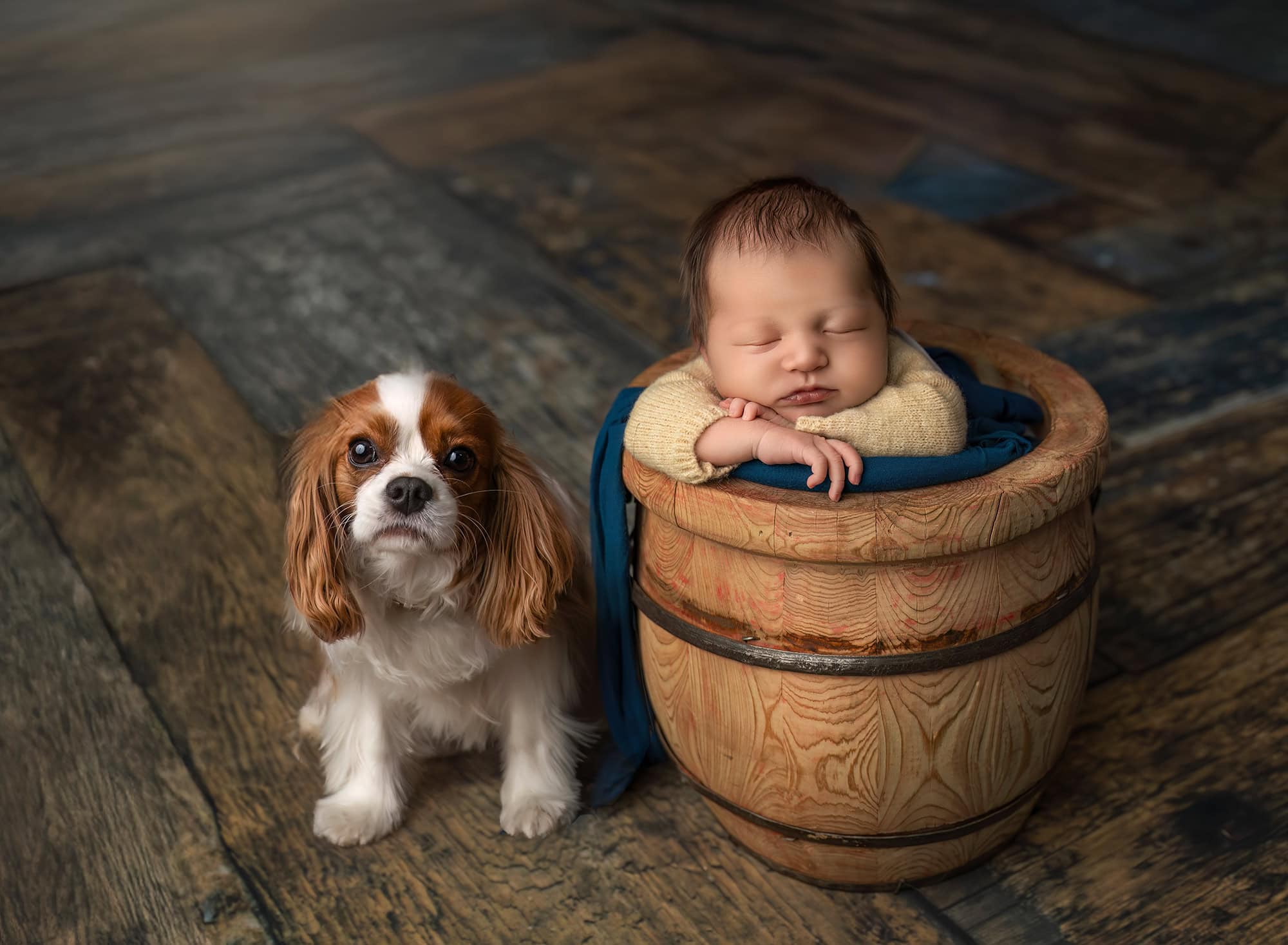 How to Choose a Photographer for Newborn Composite Photos
How to Choose a Photographer for Newborn Composite Photos
Ask questions. The right pro will appreciate them. Try these:
-
“Can you show before-and-after examples of composites?”
-
“Who supports baby during each setup? Is a second adult always present?”
-
“Which poses do you only do as composites?” (The “froggy” should always be on this list.) SLR Lounge+1
Look for Evidence of Craft
-
Portfolio depth: Do you see variety—classic portraits mixed with tasteful composites? One Big Happy Photo
-
Consistent style: Soft lighting, natural skin tones, and calm expressions signal patient, baby-led pacing.
-
Safety language on site: Photographers who talk about safety are usually the ones following it.
What to Bring (and What to Skip)
-
Bring: A pacifier (if you use one), extra milk and bottles, and a simple heirloom if you want it included in your photographs.
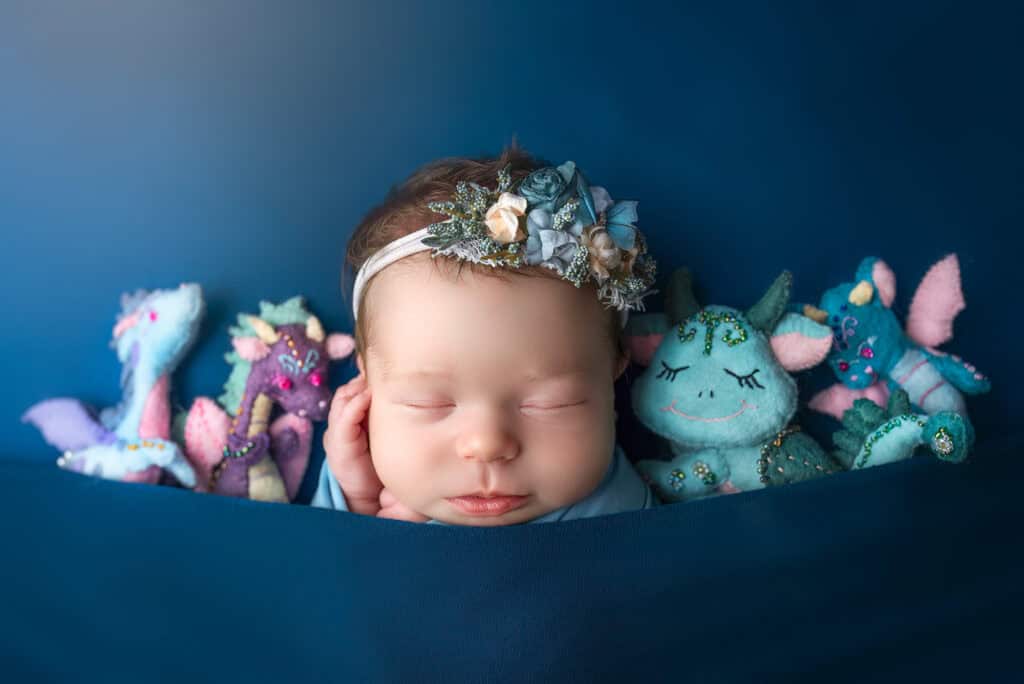
baby dragons were handmade by her grandmother -
Skip: Bulky props from home, anything fragile, and the pressure to “perform.” Your baby is the art. Your photographer handles the rest.
Timeline & Delivery
Composite creation adds editing time because the artist is painting with pixels. Expect your photographer to hand-edit each chosen portrait so the final pictures look organic and timeless, without harsh effects or gimmicks.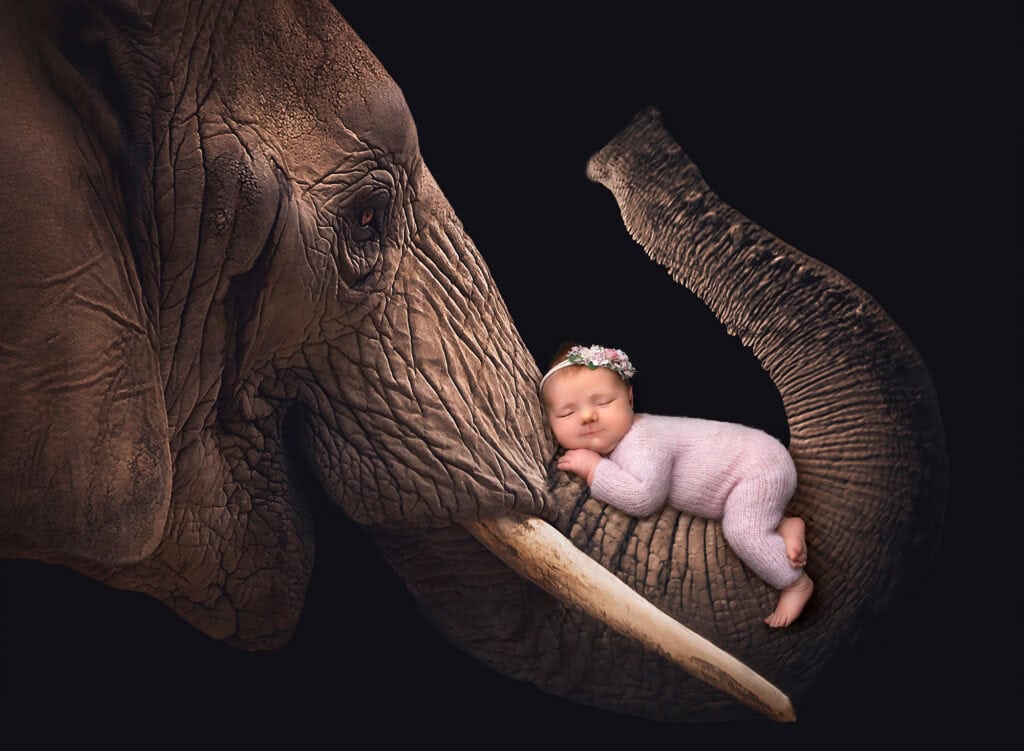
FAQ: Newborn Composite Photos (Parent Edition)
Are newborn composite photos safe?
Yes—when done properly. Baby is supported by adult hands the whole time; the “impossible” look happens in editing. Always ask your photographer which poses they only do as composites.
Can pets be in a composite?
Absolutely. Photographers often photograph each subject separately (calm pet!) and then combine them into one safe, snuggly picture. themilkyway.ca
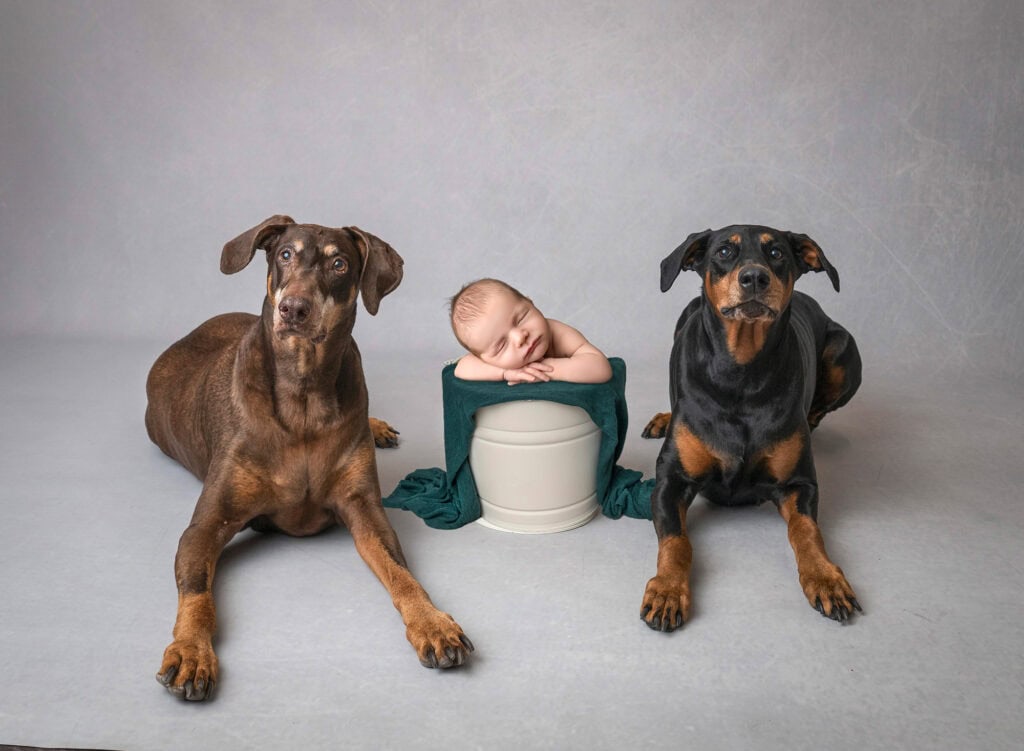
Do composites look fake?
Done well, no. The best work is invisible—accurate shadows, consistent lighting, and natural skin tones make the art feel real. Ask to see before/after examples.
How do I prepare my baby?
Feed right before the session, dress baby in easy-off layers, and bring extras. Your photographer will handle the rest, pacing the session around baby’s needs. For broader newborn care/sleep context, see AAP and CDC resources. HealthyChildren.org+1
What if my baby doesn’t sleep?
Awake composites are beautiful too. A patient photographer will pivot to swaddles, parent snuggles, and simpler setups, then build the composite in post.
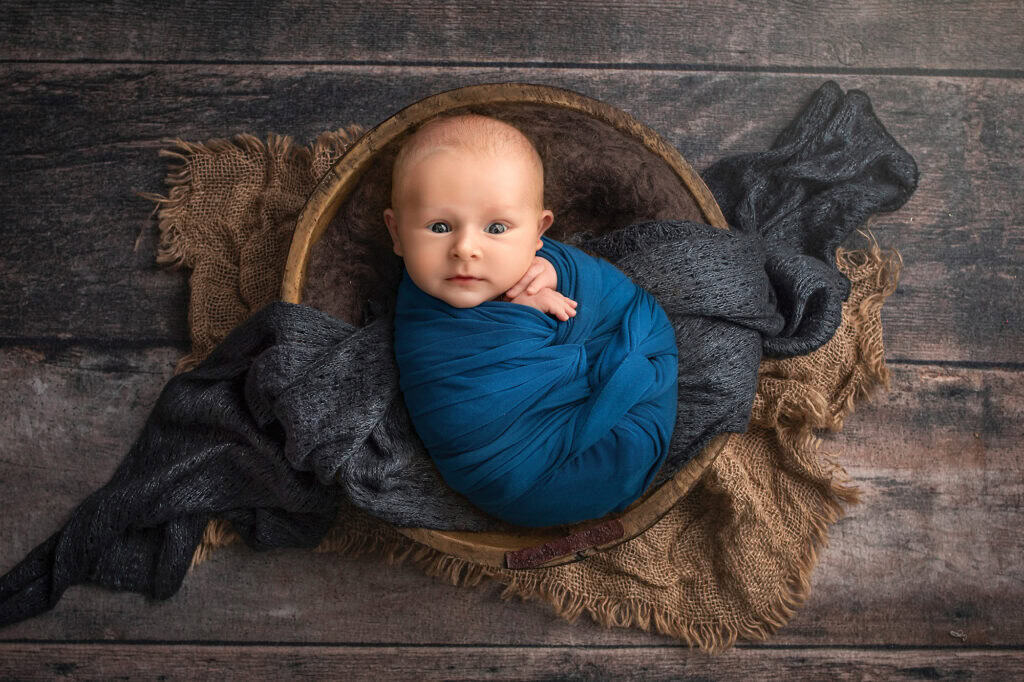
Why Parents Choose Composites (The Feel-Good Part)
-
Meaning: You get artwork that reflects your family story.
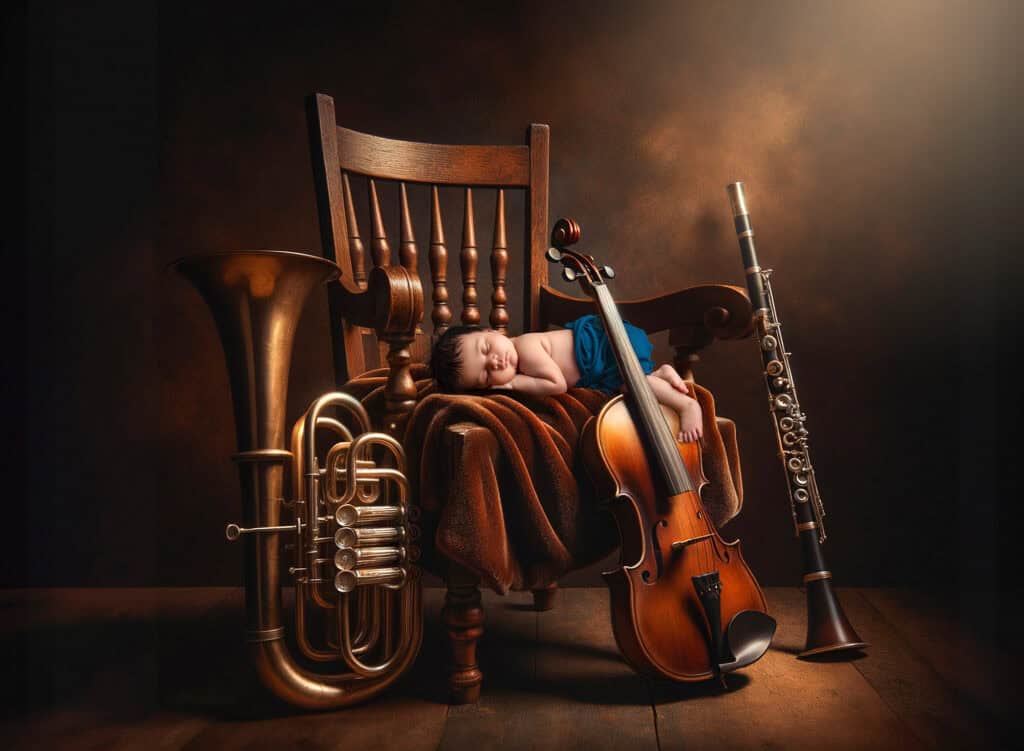
-
Calm: Sessions stay relaxed because no one is anxious about creating a precarious moment.
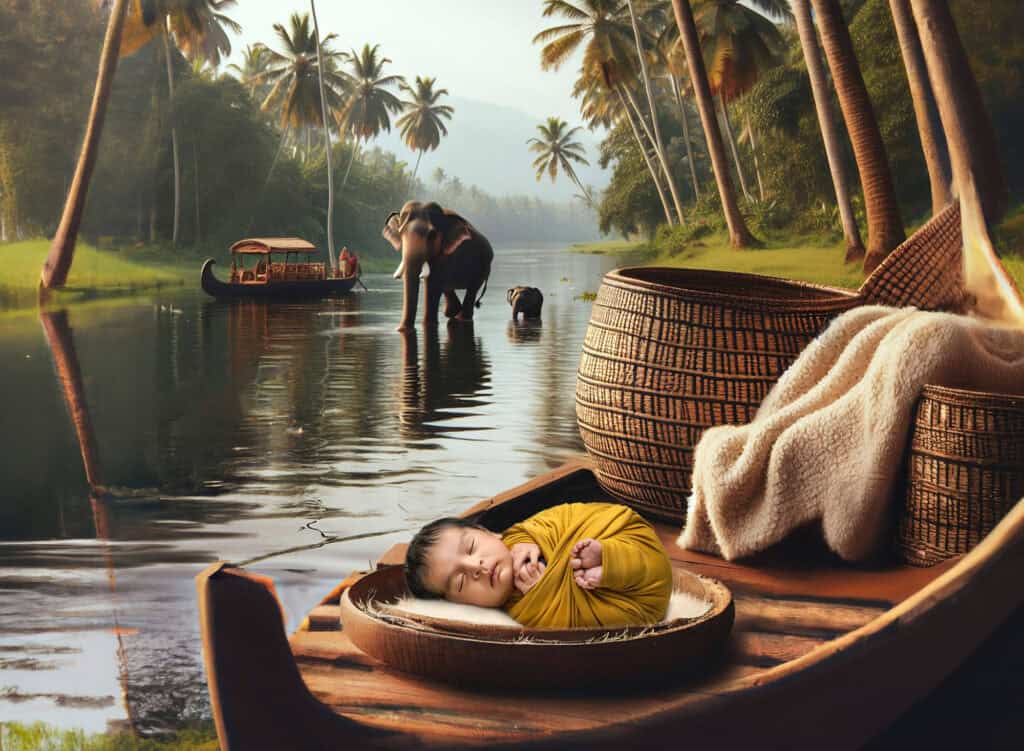
-
Longevity: Classic editing + timeless styling = portraits that age as beautifully as your child.
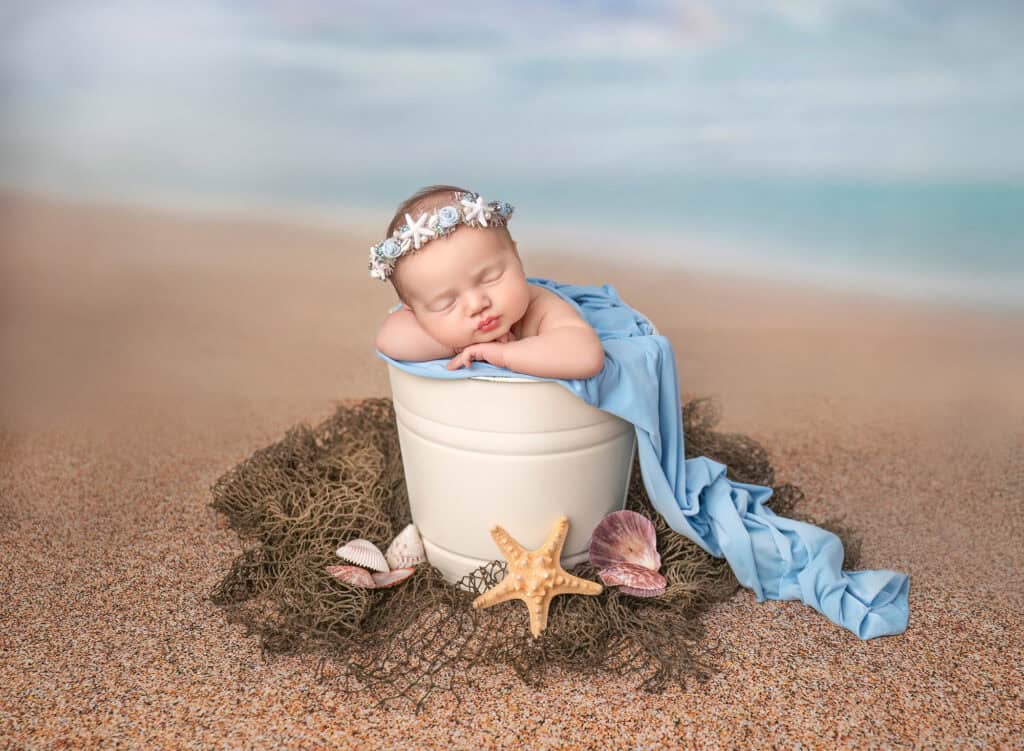
See Real-Life Examples & Related Reads
-
Explore award-winning newborn portraits with tasteful composites and colorful styling. One Big Happy Photo
-
 Browse dreamy newborn photographs that mix simple poses with creative composites. One Big Happy Photo
Browse dreamy newborn photographs that mix simple poses with creative composites. One Big Happy Photo -
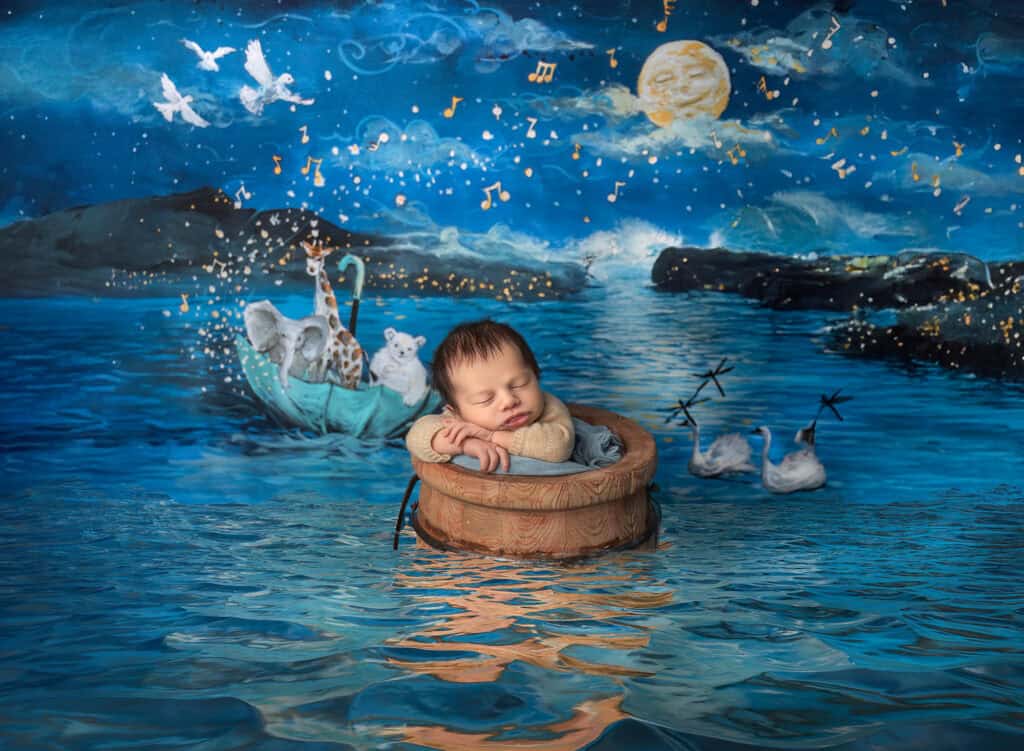
Conclusion
Newborn days are messy, loud, and heart-achingly sweet. Newborn composite photos let you bottle that feeling—safely—into heirloom artwork your child will someday point to and say, “That was me?” If you’re dreaming up an idea, bring it. The safest photographers love turning parent ideas into portraits that honor who you are together.

Comment
Leave a Reply Cancel reply
You must be logged in to post a comment.

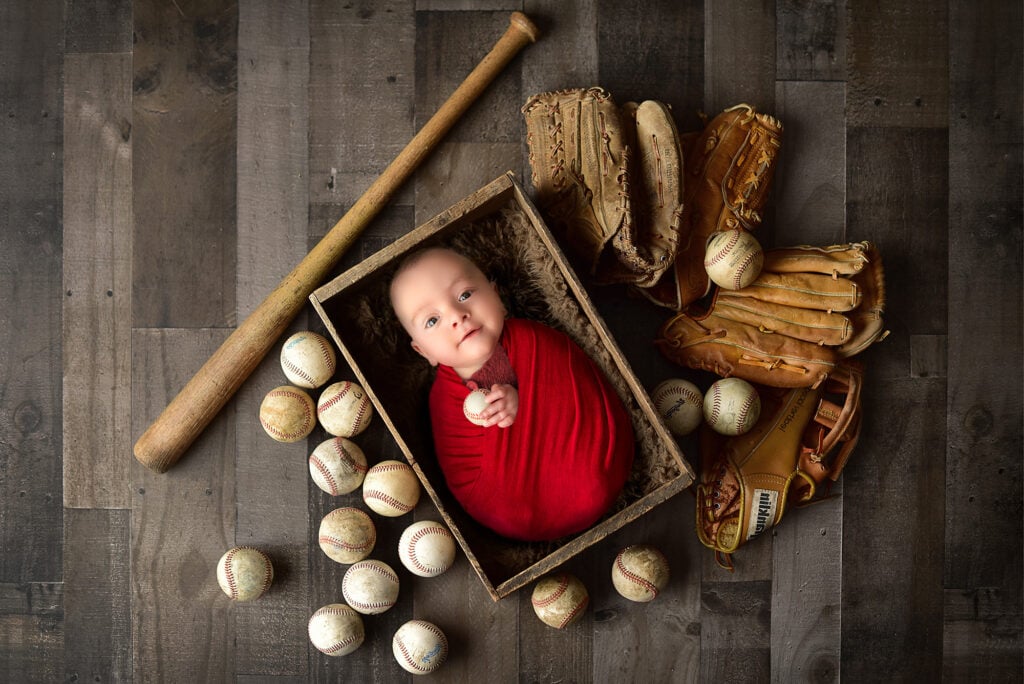
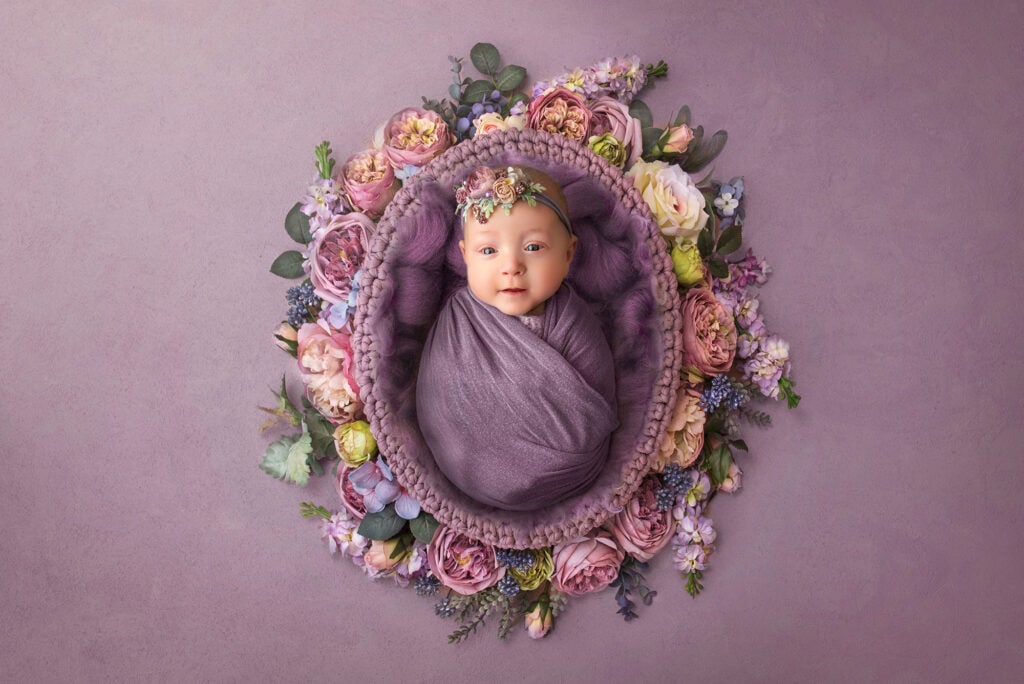
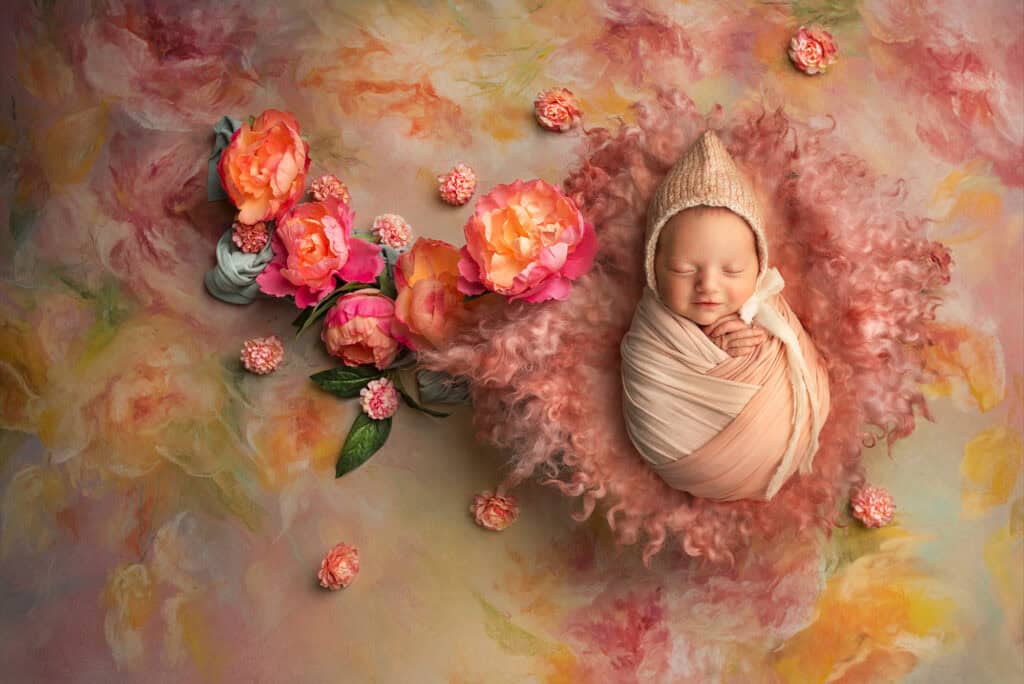
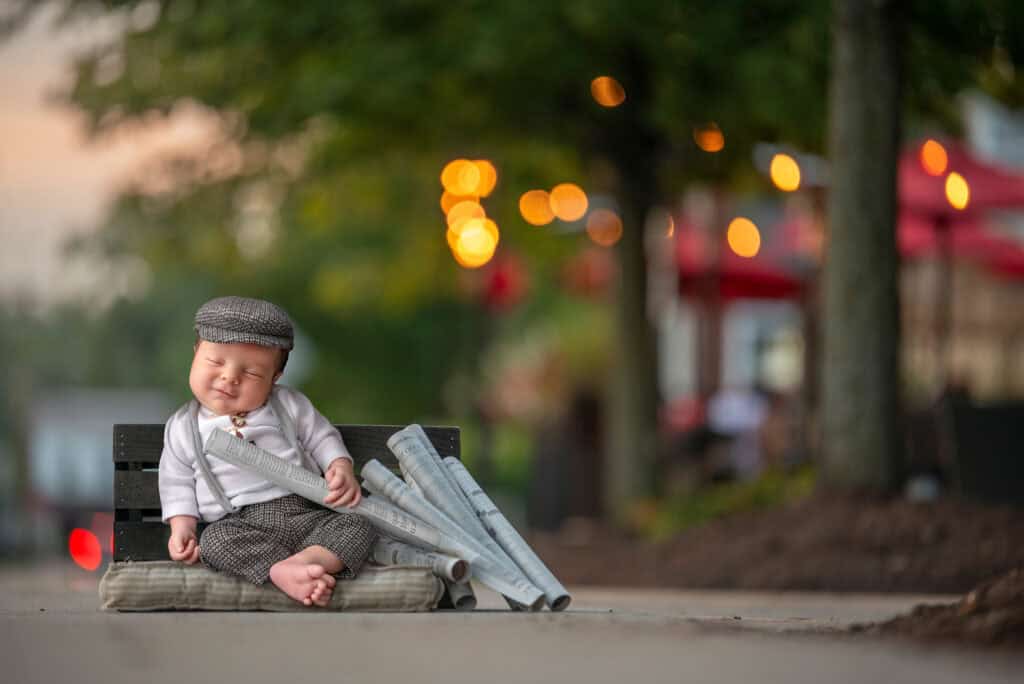
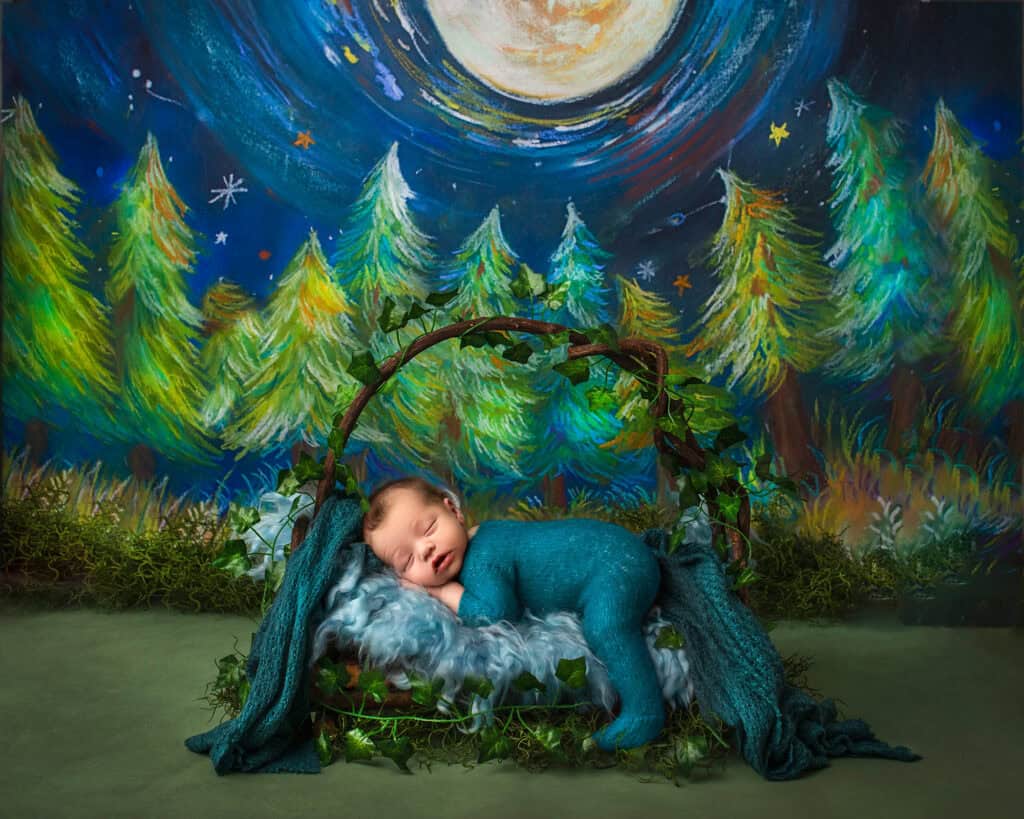
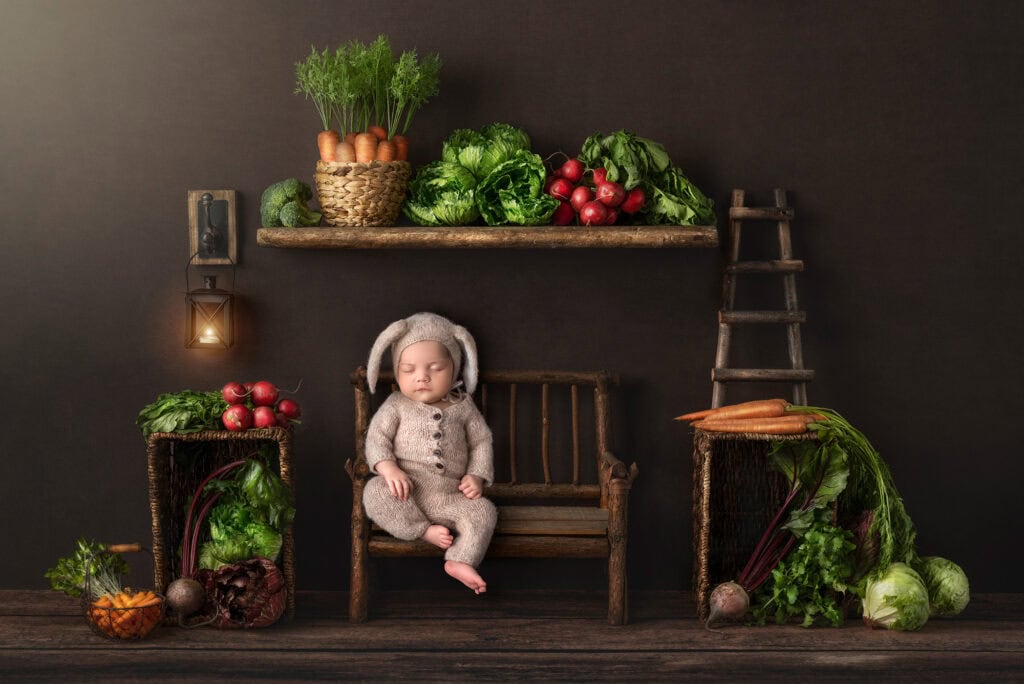
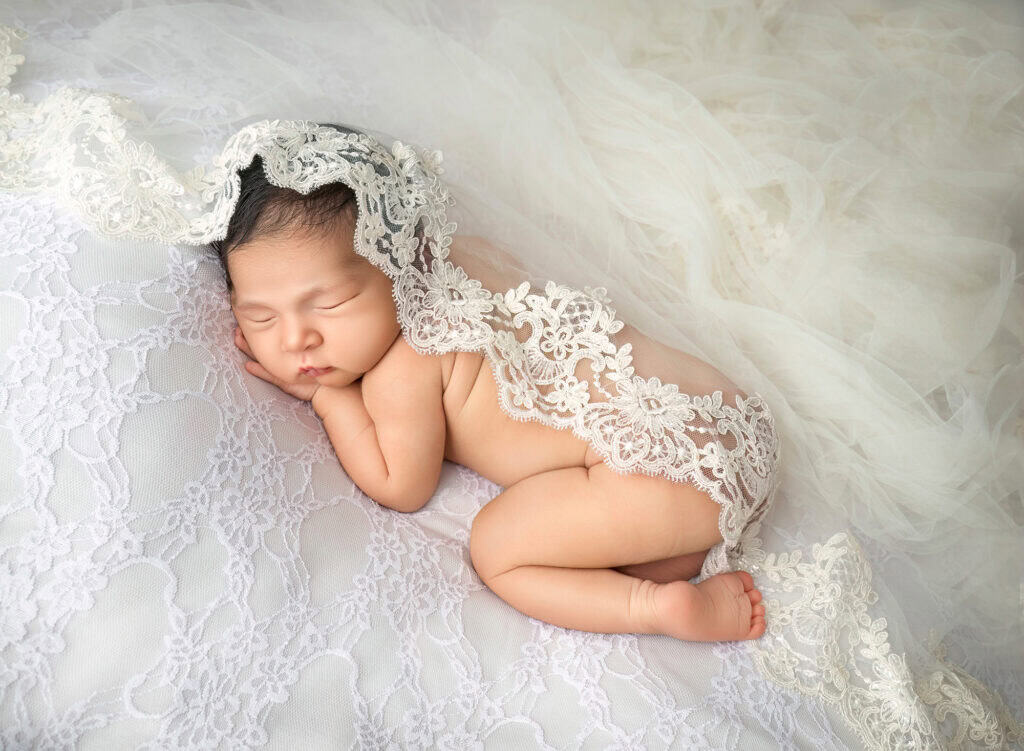
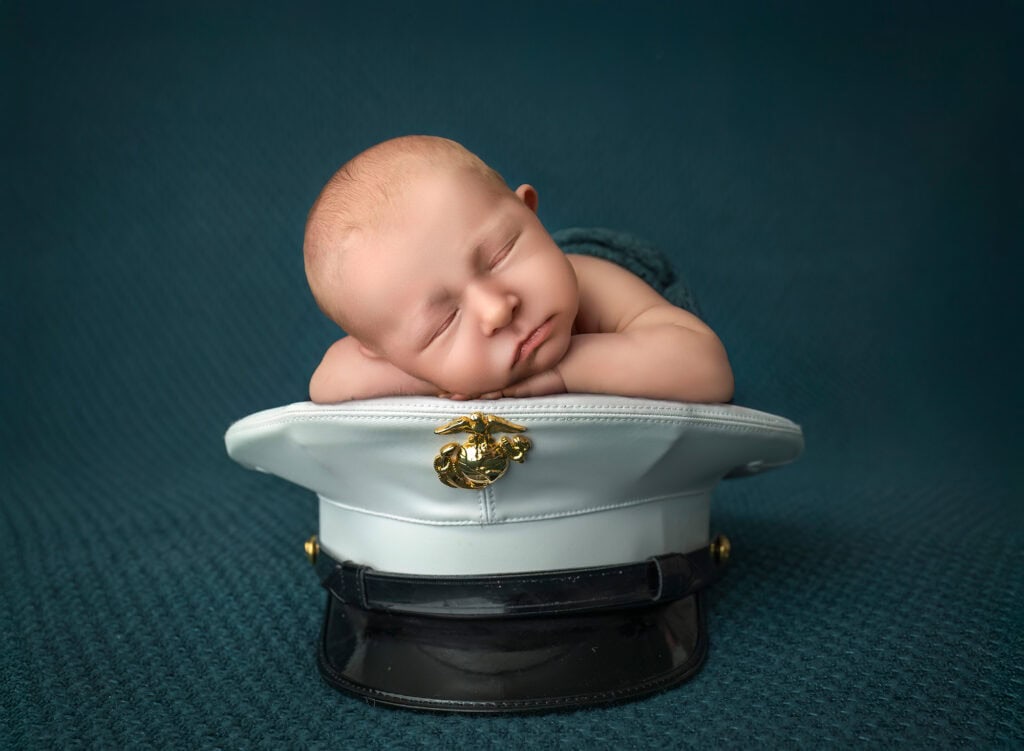
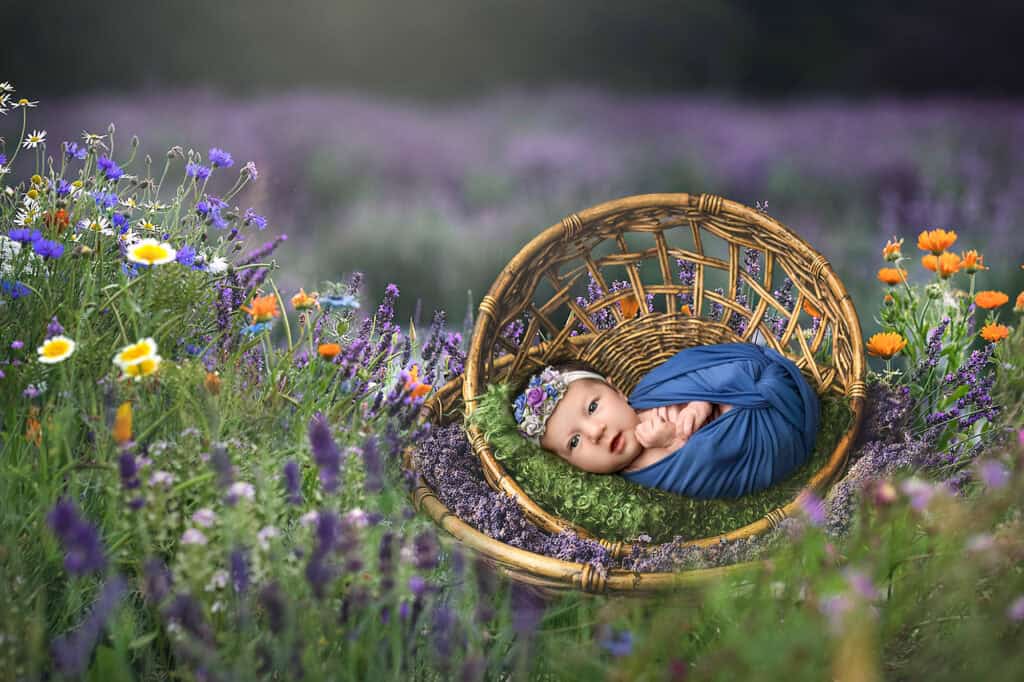
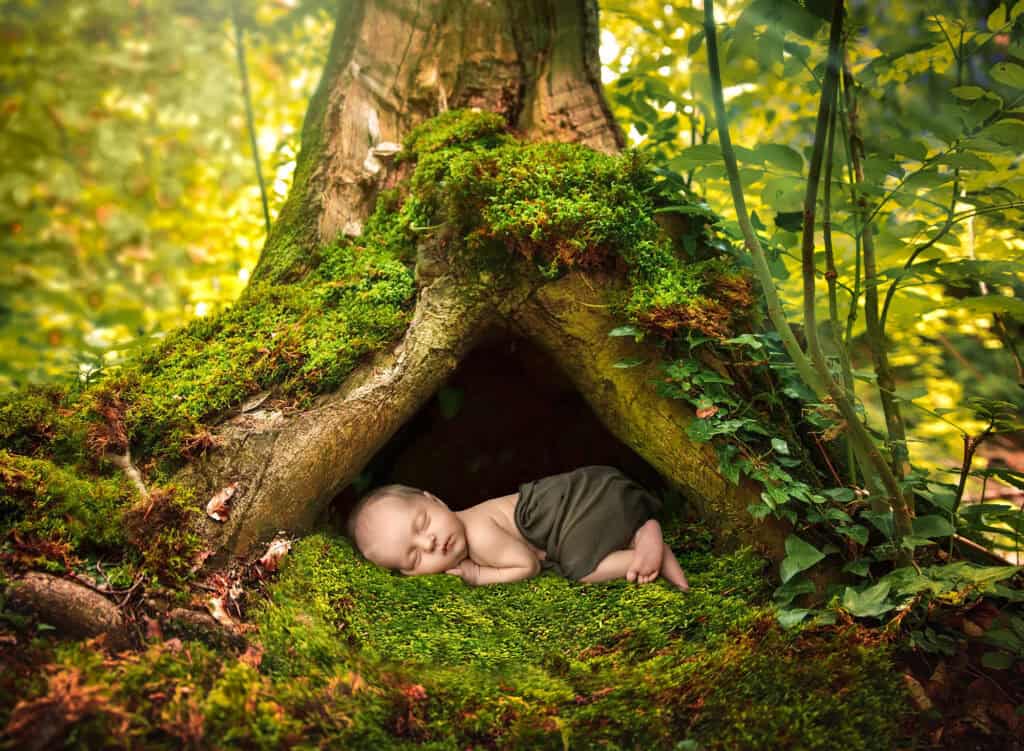
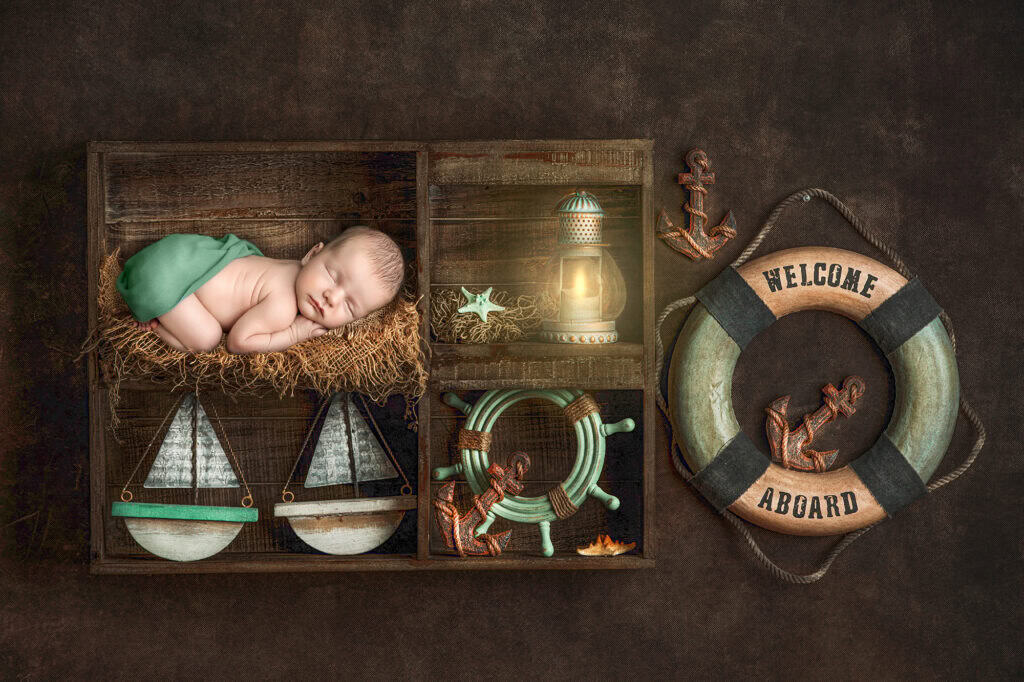
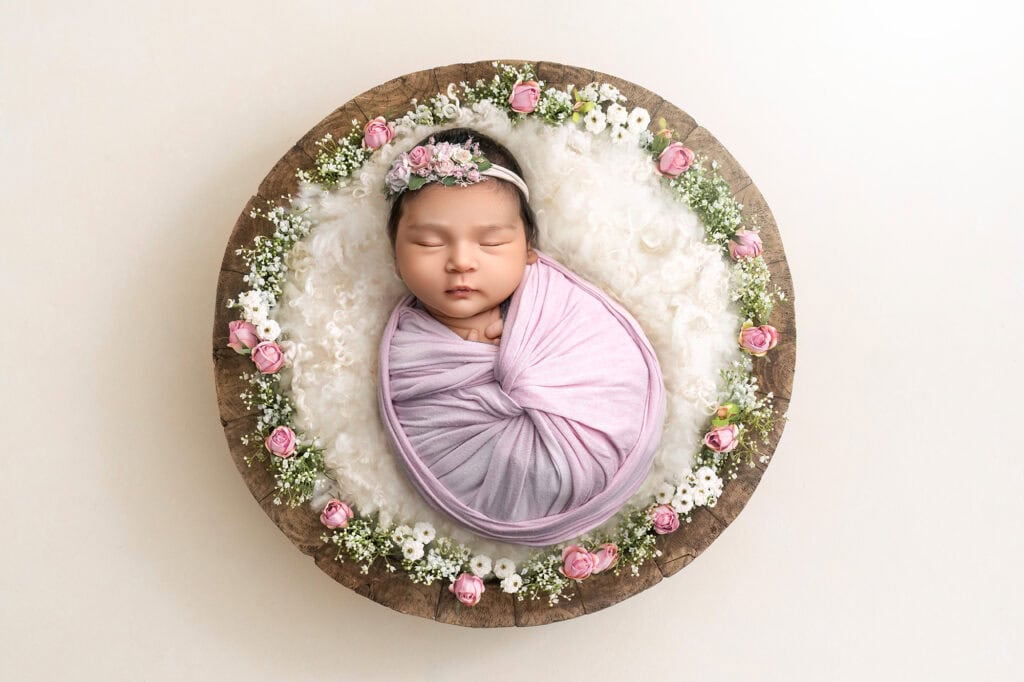
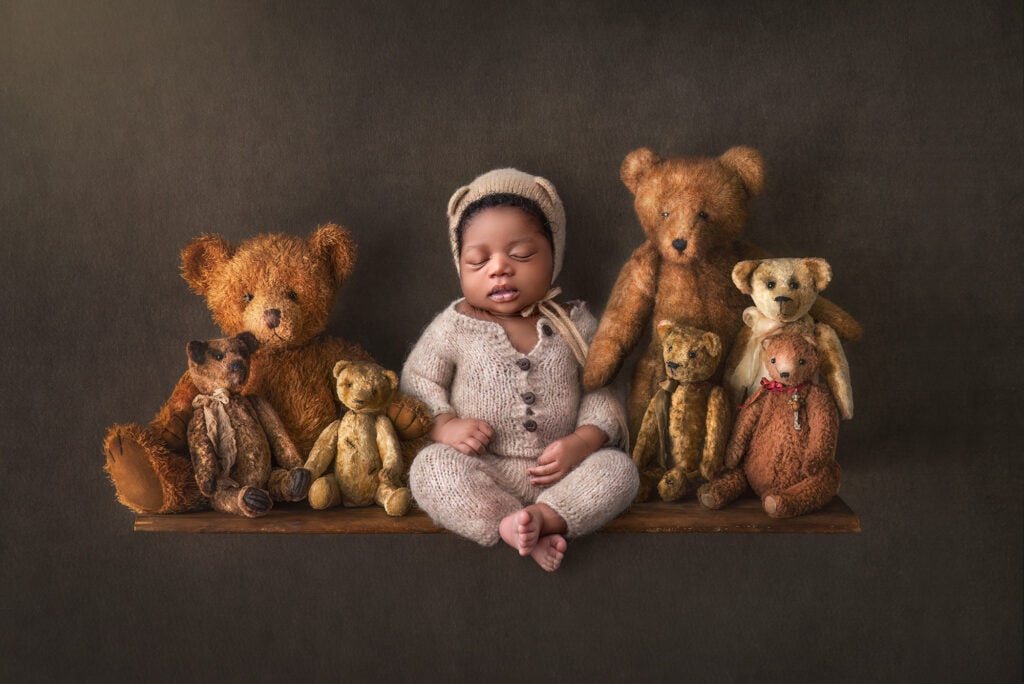
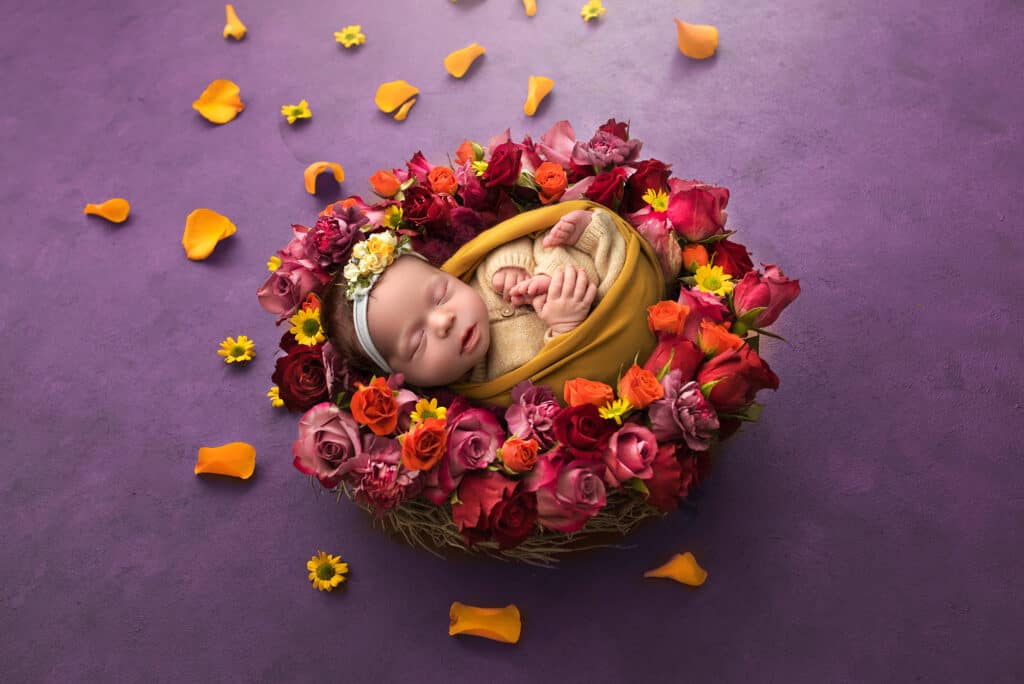
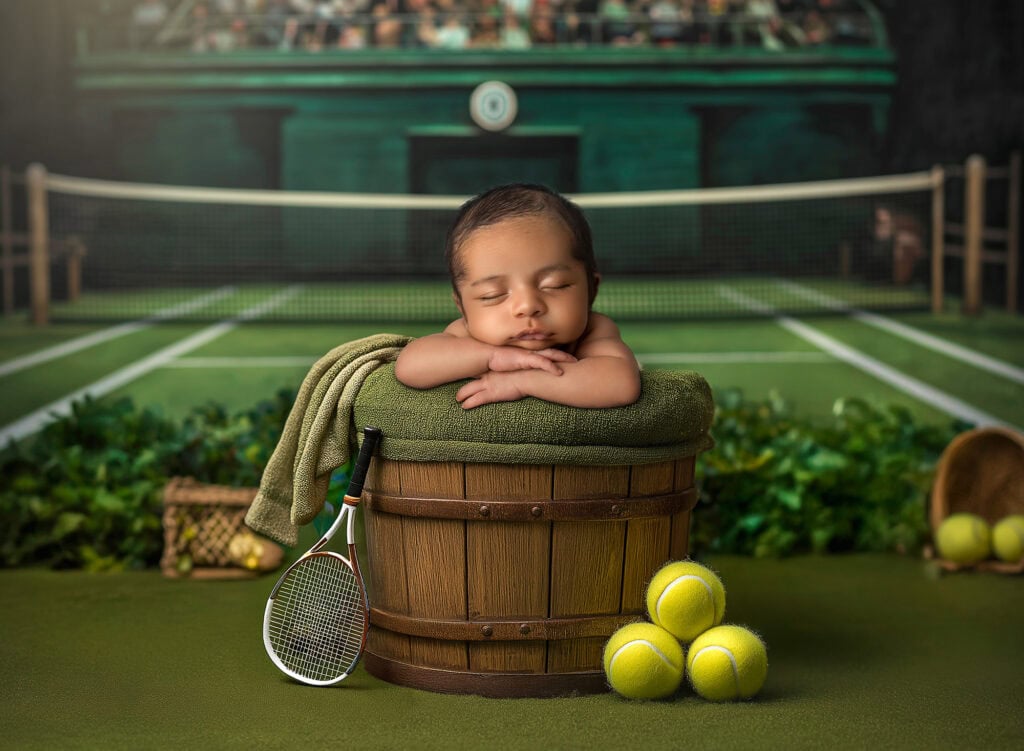
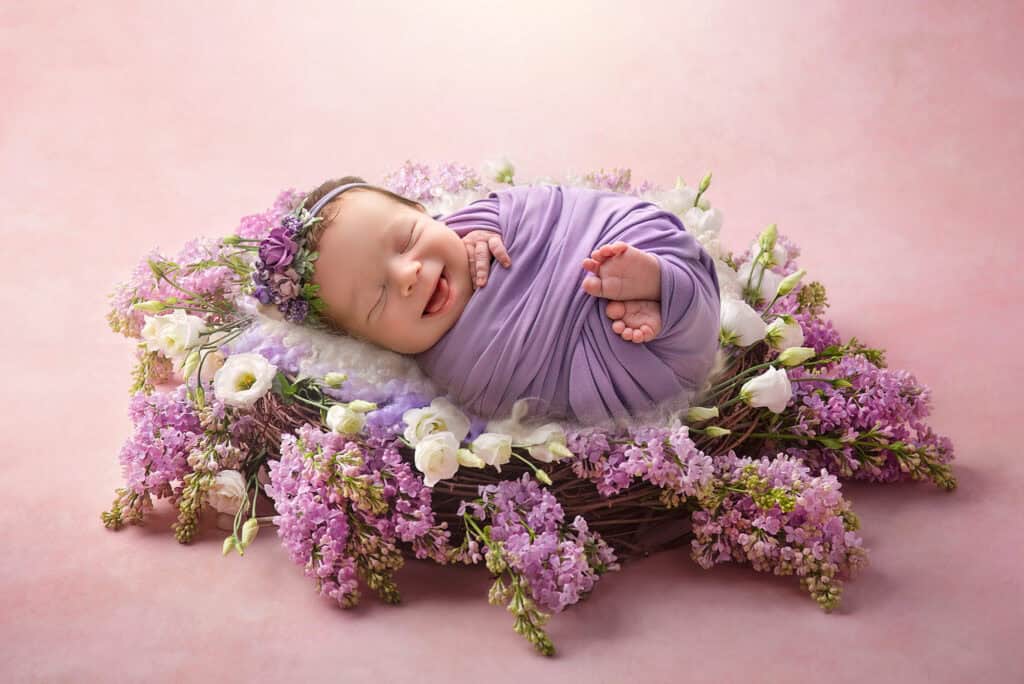
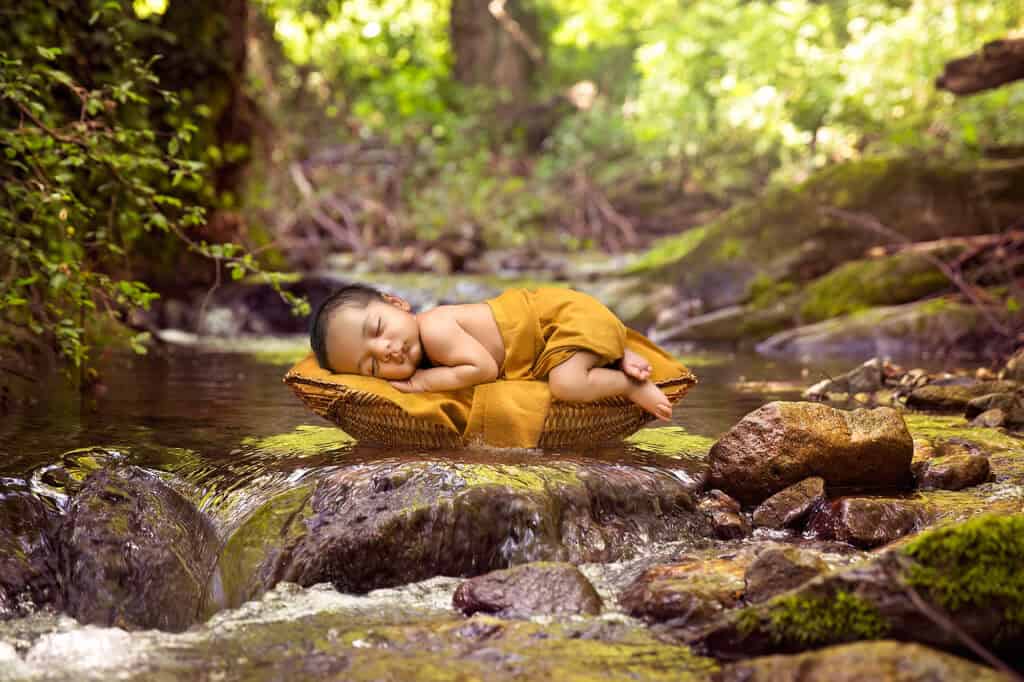
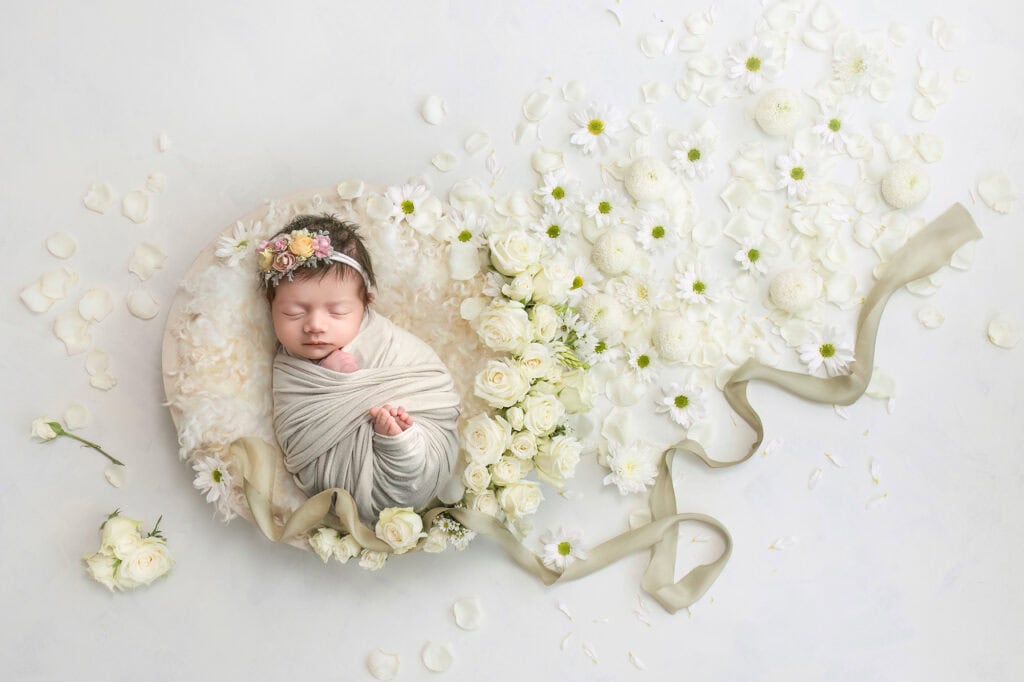
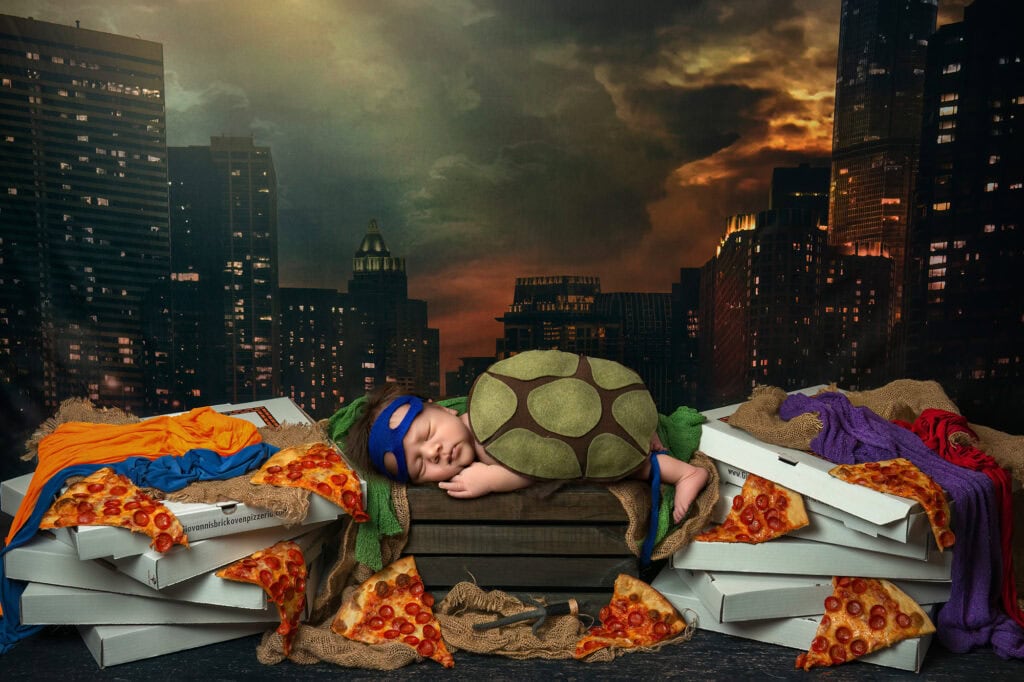
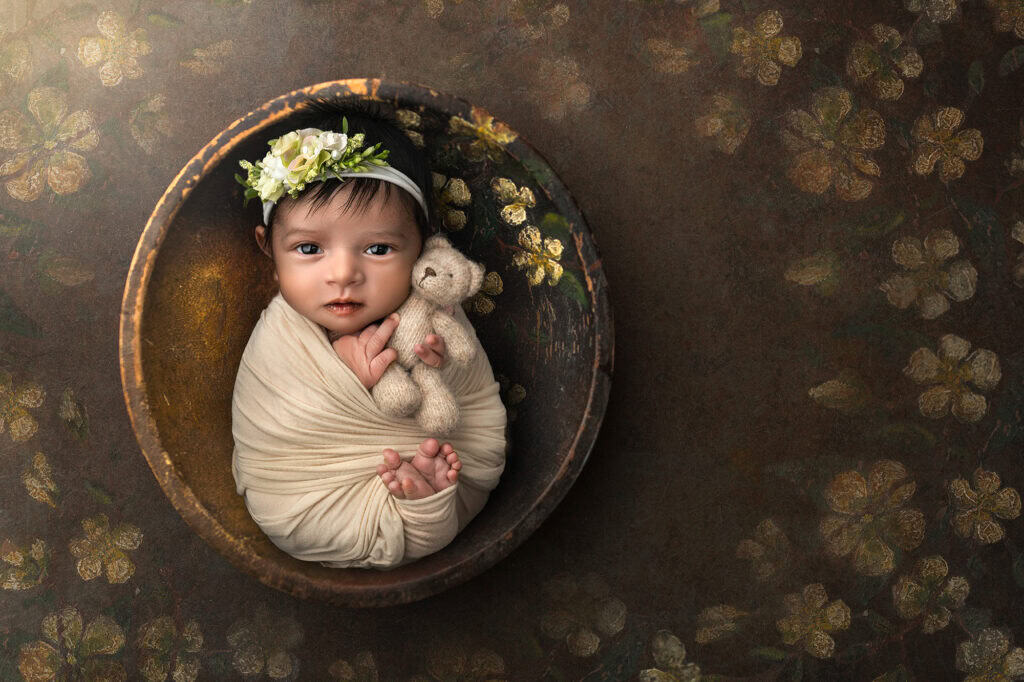
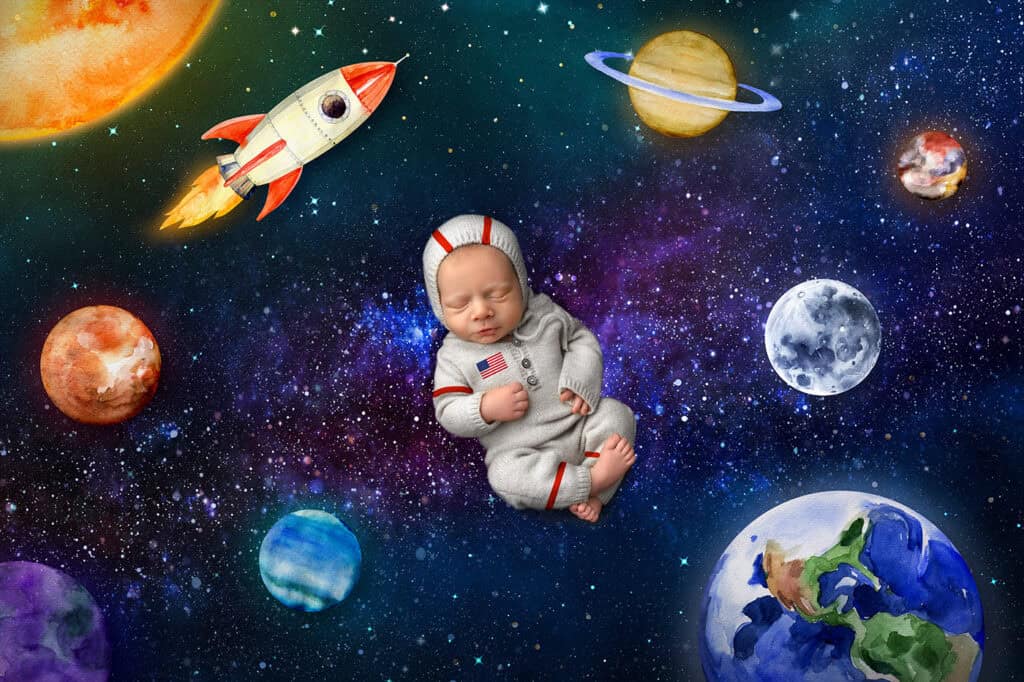
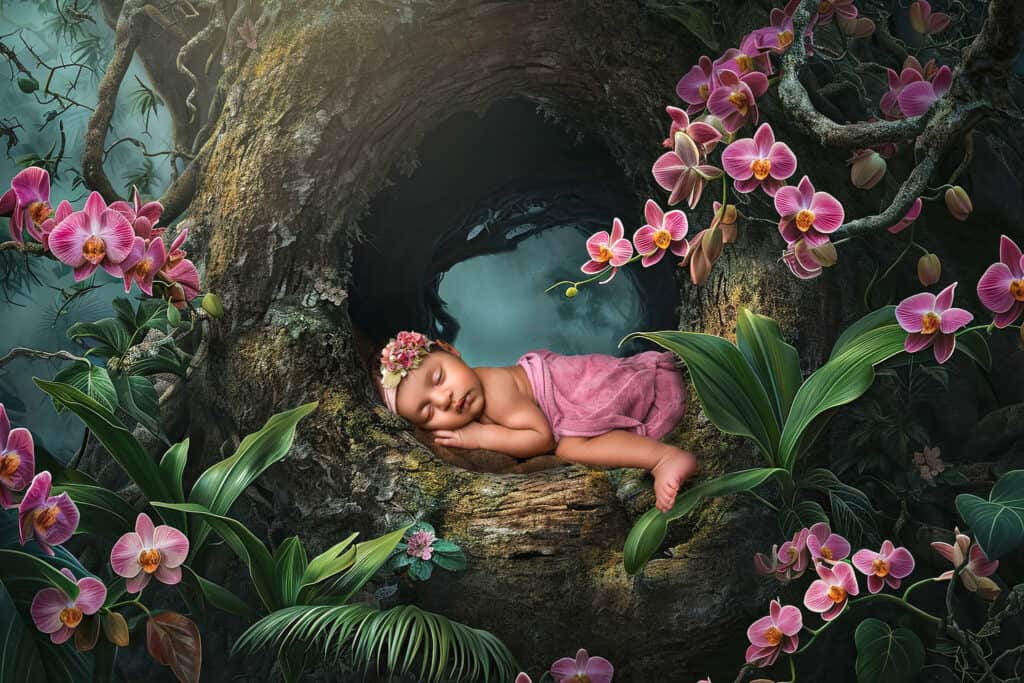
[…] Are elaborate newborn poses safe?They can be when done as composites (multiple images edited together) and with hands supporting baby at all […]